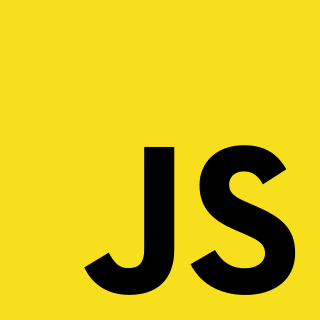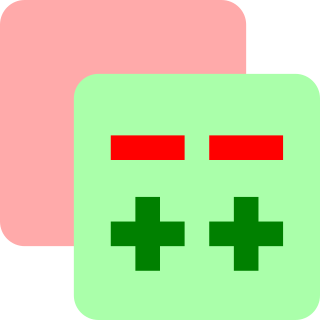
JavaScript, often abbreviated as JS, is a high-level, interpreted programming language that conforms to the ECMAScript specification. JavaScript has curly-bracket syntax, dynamic typing, prototype-based object-orientation, and first-class functions.

An integrated development environment (IDE) is a software application that provides comprehensive facilities to computer programmers for software development. An IDE normally consists of at least a source code editor, build automation tools, and a debugger. Some IDEs, such as NetBeans and Eclipse, contain the necessary compiler, interpreter, or both; others, such as SharpDevelop and Lazarus, do not.
A source-code repository is a file archive and web hosting facility where a large amount of source code, for software or for web pages, is kept, either publicly or privately. They are often used by open-source software projects and other multi-developer projects to handle various versions. They help developers submit patches of code in an organized fashion. Often these web sites support version control, bug tracking, release management, mailing lists, and wiki-based documentation...

Mercurial is a distributed revision-control tool for software developers. It is supported on Microsoft Windows and Unix-like systems, such as FreeBSD, macOS and Linux.
HTML Tidy is a console application for correcting invalid hypertext markup language (HTML), detecting potential web accessibility errors, and for improving the layout and indent style of the resulting markup. It is also a cross-platform library for computer applications that provides HTML Tidy's features.

TurboGears is a Python web application framework consisting of several WSGI components such as WebOb, SQLAlchemy, Genshi and Repoze.

Komodo Edit is a free text editor for dynamic programming languages. It was introduced in January 2007 to complement ActiveState's commercial Komodo IDE. As of version 4.3, Komodo Edit is built atop the Open Komodo project.

Aptana, Inc. is a company that makes web application development tools for Web 2.0 and Ajax for use with a variety of programming languages. Aptana's main products include Aptana Studio, Aptana Cloud and Aptana Jaxer.

Google App Engine is a web framework and cloud computing platform for developing and hosting web applications in Google-managed data centers. Applications are sandboxed and run across multiple servers. App Engine offers automatic scaling for web applications—as the number of requests increases for an application, App Engine automatically allocates more resources for the web application to handle the additional demand.
In FOSS development communities, a forge is a web-based collaborative software platform for both developing and sharing computer applications. A forge platform is generally able to host multiple independent projects.

Zembly was a browser-based development environment from Sun Microsystems that enabled social programming of applications for Facebook, Meebo, OpenSocial, iPhone web applications, and other social platforms, as well as web widgets. Users of zembly interacted with one another via zembly's social networking features to engage in co-development of applications for these platforms. It was available from 2008-2009.
Firefox Sync, originally branded Mozilla Weave, is a browser synchronization feature that allows users to partially synchronize bookmarks, browsing history, preferences, passwords, filled forms, add-ons, and the last 25 opened tabs across multiple computers.
Bitbucket is a web-based version control repository hosting service owned by Atlassian, for source code and development projects that use either Mercurial or Git revision control systems. Bitbucket offers both commercial plans and free accounts. It offers free accounts with an unlimited number of private repositories as of September 2010. Bitbucket integrates with other Atlassian software like Jira, HipChat, Confluence and Bamboo.

Gitorious was a shared web hosting service for collaborative free and open-source software development projects that use the Git revision control system. The name also refers to the free and open-source server software that the Web site is developed and hosted on. According to the Git User's Survey in 2011, Gitorious was the second most popular hosting service for Git, with 11.7% of respondents indicating they use it, behind 87.5% using GitHub. On 3 March 2015, Gitorious was acquired by GitLab, who announced service through gitorious.org would be discontinued on 1 June 2015 and encouraged Gitorious users to make use of its import tools to migrate projects to GitLab.

Gerrit is a free, web-based team code collaboration tool. Software developers in a team can review each other's modifications on their source code using a Web browser and approve or reject those changes. It integrates closely with Git, a distributed version control system.

Rust is a multi-paradigm systems programming language focused on safety, especially safe concurrency. Rust is syntactically similar to C++, but is designed to provide better memory safety while maintaining high performance.

Servo is an experimental browser engine developed to take advantage of the memory safety properties and concurrency features of the Rust programming language. The project was initiated by Mozilla Research with effort from Samsung to port it to Android and ARM processors. The prototype seeks to create a highly parallel environment, in which many components are handled by fine-grained, isolated tasks.

CodeMirror is a JavaScript component that provides a code editor in the browser. It has a rich programming API and a focus on extensibility.


















